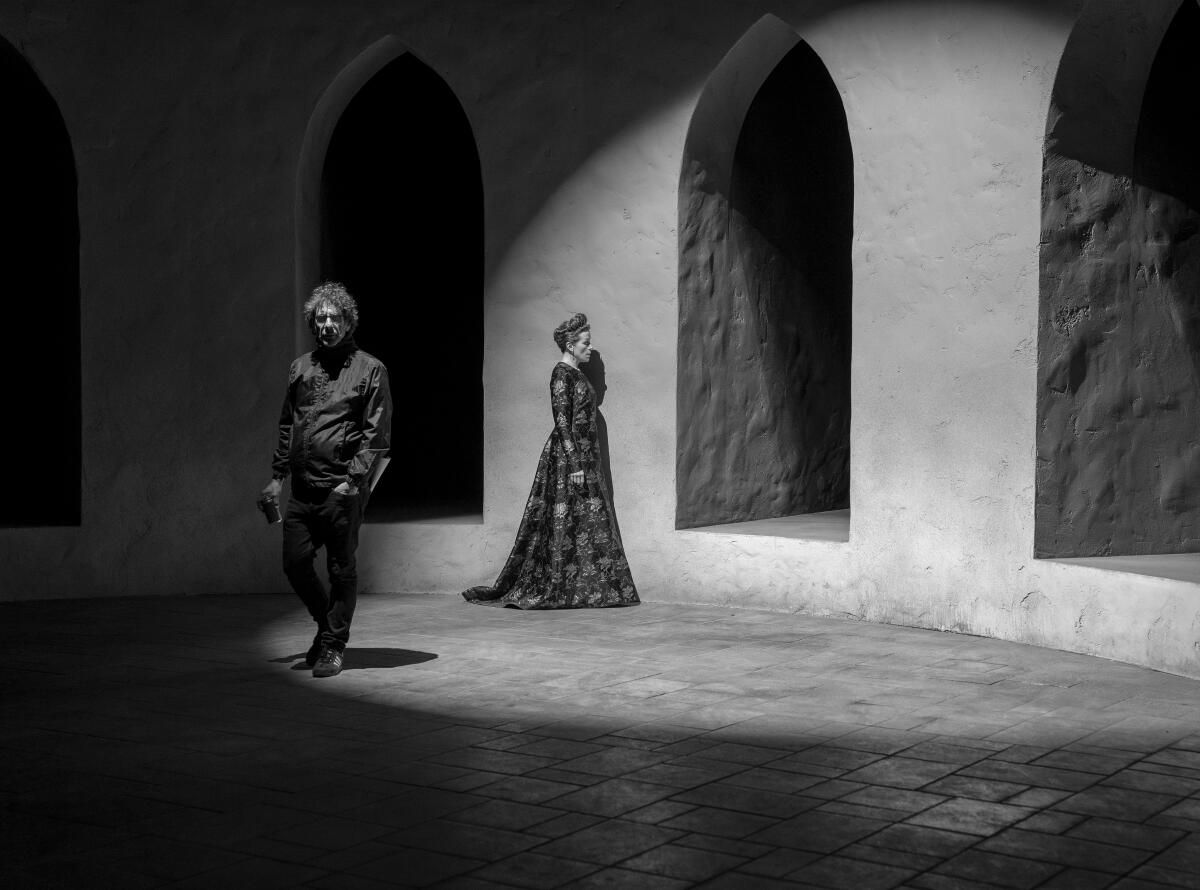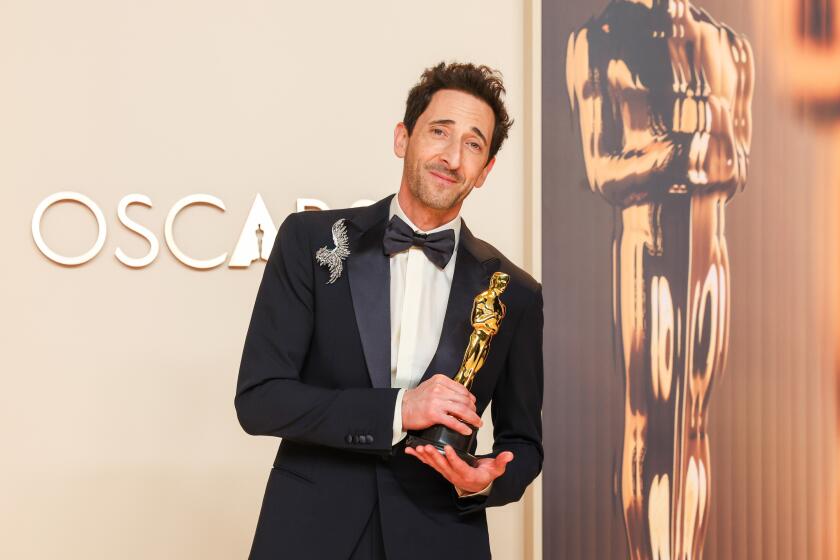How ‘Macbeth’s’ sparse design and shadows push Shakespeare to the fore

- Share via
The biggest challenge for production designer Stefan Dechant in bringing Joel Coen’s adaptation of Shakespeare’s “The Tragedy of Macbeth” to screen was crafting the right tone. Early conversations held with the Oscar-winning director and the film’s cinematographer Bruno Delbonnel outlined a visual grammar that included sparse but moody sets designed to accommodate the camera.
“Joel had a vision from Day 1 and didn’t want to re-create an authentic period piece,” says Dechant. “He and Bruno collected imagery and one of the first images shown to me was from photographer Hiroshi Sugimoto. It had this soft focus and was completely abstract. Joel said, ‘I think this is infamous.’” The trio discussed a number of references from German Expressionist cinema to English director and stage designer Edward Gordon Craig, who is known for creating simple forms and shapes to offset the actors and lighting in theatrical plays.
Motivating the designs was a rich monochromatic palette where Dechant digitally drew the sets during prep to better understand what visually worked before the art department built the physical pieces for the soundstage. “After the decision was made to shoot black and white, everything which was an obstruction to the dialogue was avoided,” says Delbonnel, a five-time Oscar-nominee.
With this in mind, the production designer and cinematographer considered the aesthetics of the film similar to a haiku by keeping it simple and avoiding any visual distractions in scenes yet still adding enough emotional weight to carry the story. Dechant created textures within the set pieces to subliminally add to the black-and-white imagery. “All the sets have gradations or shadows painted on them,” he points out. “Some sets are completely black and the arches have darker tones painted underneath. It was all a way to accentuate the shapes and forms using paint.”
To light scenes, Delbonnel deployed concert-style fixtures that allowed him to create contrast. “With my gaffer Michael Bauman, we invested in lights that would give us a hard edge and hard shadows. We controlled them through a computer so we could zoom in or dim them to give us the exact look we were going for,” says the cinematographer.
Framing was also key to the intimate story, one where Denzel Washington plays Lord Macbeth with Frances McDormand as Lady Macbeth. One of the first images we see of Macbeth is him walking through a foggy field and it stops on an extreme closeup of his face. “We wanted something really strong here,” says Delbonnel. “He’s coming to you as the audience and we end up on this big closeup as kind of a statement. It’s why we chose the Academy format since a closeup fills the frame.”
With tighter shots, the Shakespearean lines become more powerful and we can gaze into their eyes. Other moments, for example, when Lady Macbeth is seen more as a tyrant, there is a scene where she walks up a set of stairs and Delbonnel slightly tilts the camera to a symmetrical Dutch angle to add to the uneasiness of her character.
Production shot for 35 days in Los Angeles, where Coen devised detailed shot lists for scenes. “Joel is an amazing director and has his own language,” Delbonnel says. “Everything is storyboarded and he doesn’t do coverage. Scenes were built around specific lines and closeups because if the line was important, he didn’t want to lose it.” One of those essential moments takes place in the bell tower at night where Lord and Lady Macbeth discuss their future plans. The director keyed in on McDormand’s face, separated by a shadowy background to bring the veracity of what she’s saying closer to screen.
Other moments played to the psychosis of the tragedy — one set piece being a long corridor with a door at the end of it with a dagger for a knob. Lord Macbeth walks by it several times as it acts as a metaphor for his perilous journey. “It was a critical design element to the story,” says Dechant. “By Week 2, we had it taped out on stage and were able to find the pace to see how long it needed to be. The direction, cinematography and choreography were so intertwining and unlike anything I have ever done before.”
Light and shadow had an essential place in the sequences and Delbonnel worked closely with Dechant to shape the light in a rhythmic way to match the acting and emotional state of Lord Macbeth.
“In terms of look, we were trying to bring a kind of musical score. It’s a big palette of gray with very strong black-and-white imagery where it’s not pure white or pure black, but kind of a contrast. It’s a palette of gray and nothing else,” says Delbonnel. “So we tried to follow the musicality of Shakespeare lines. When Shakespeare moves from straight monologue to iambic pentameter, we wanted to find a way to emphasize it and show it to the audience without killing the image. So the visuals are an homage to the English language in many ways and we tried to support that idea.”
More to Read
From the Oscars to the Emmys.
Get the Envelope newsletter for exclusive awards season coverage, behind-the-scenes stories from the Envelope podcast and columnist Glenn Whipp’s must-read analysis.
You may occasionally receive promotional content from the Los Angeles Times.







